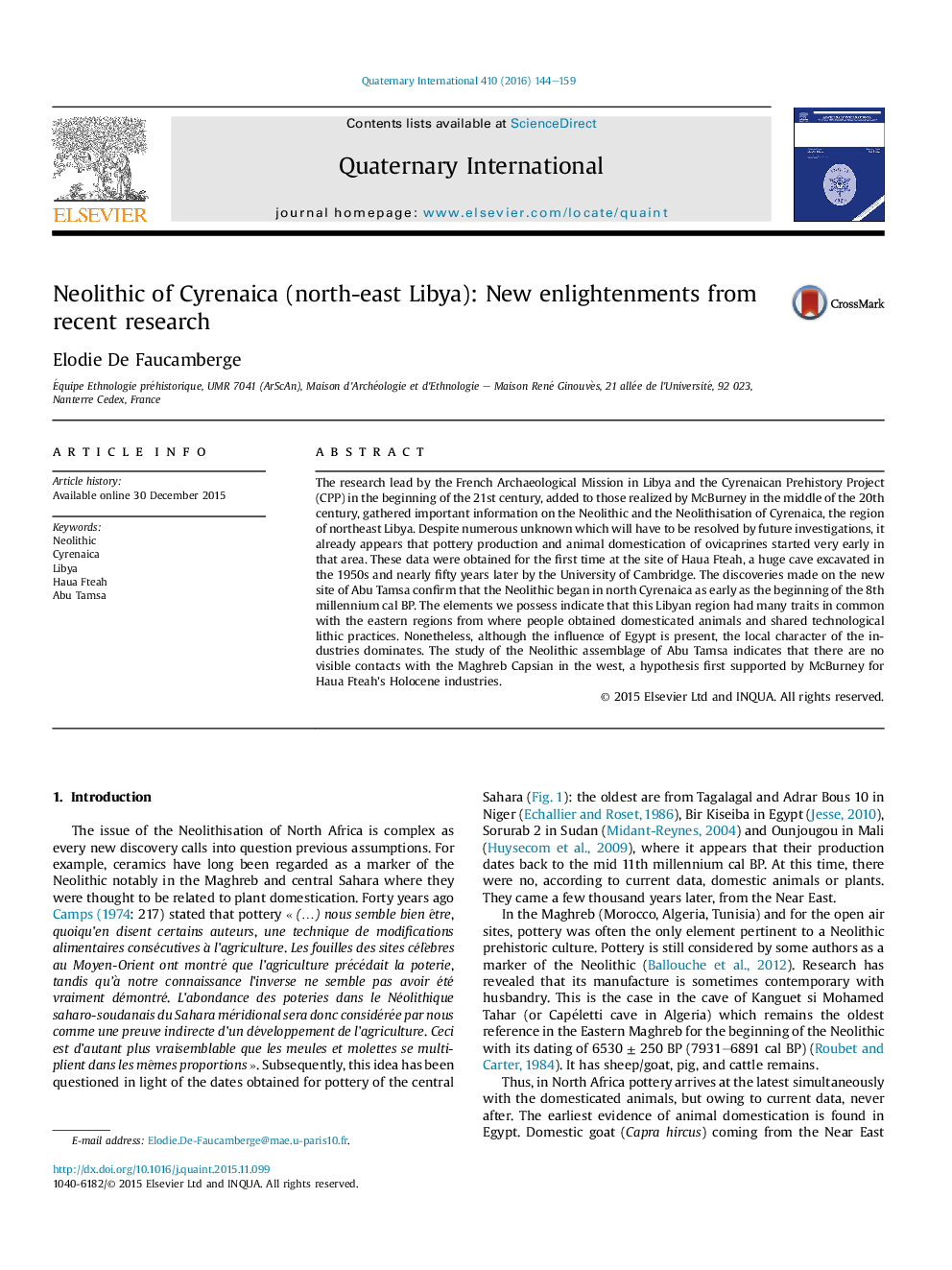| Article ID | Journal | Published Year | Pages | File Type |
|---|---|---|---|---|
| 1039899 | Quaternary International | 2016 | 16 Pages |
The research lead by the French Archaeological Mission in Libya and the Cyrenaican Prehistory Project (CPP) in the beginning of the 21st century, added to those realized by McBurney in the middle of the 20th century, gathered important information on the Neolithic and the Neolithisation of Cyrenaica, the region of northeast Libya. Despite numerous unknown which will have to be resolved by future investigations, it already appears that pottery production and animal domestication of ovicaprines started very early in that area. These data were obtained for the first time at the site of Haua Fteah, a huge cave excavated in the 1950s and nearly fifty years later by the University of Cambridge. The discoveries made on the new site of Abu Tamsa confirm that the Neolithic began in north Cyrenaica as early as the beginning of the 8th millennium cal BP. The elements we possess indicate that this Libyan region had many traits in common with the eastern regions from where people obtained domesticated animals and shared technological lithic practices. Nonetheless, although the influence of Egypt is present, the local character of the industries dominates. The study of the Neolithic assemblage of Abu Tamsa indicates that there are no visible contacts with the Maghreb Capsian in the west, a hypothesis first supported by McBurney for Haua Fteah's Holocene industries.
